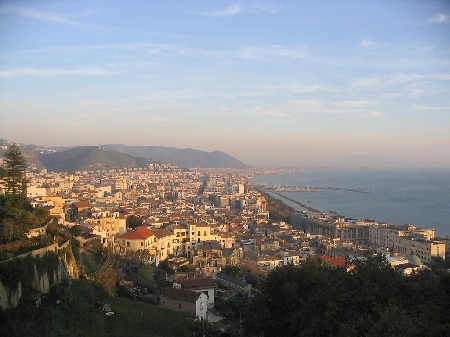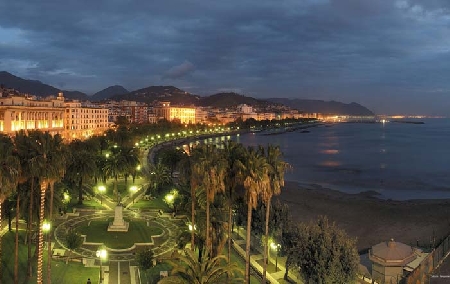

Salerno: a beautiful and lively city by the Tirrenian Sea stretching by the coast and reaching the hills behind, between the wonderful Amalfi Coast in the west and the plain of Paestum with its amazing greek temples in the south.
Salerno has various faces, being a city at same time ancient and modern: first an Etruscan village with the name of Marcina, then a roman colony from in the first century b.C. with the name of Salernum, till the coming of the Lombards in the VIIth century a.C., when it became the capital of the Langobardia Minor, surviving for two centuries after the collapse of the Langobardia Maior conquered by Charlemagne.
In the eleventh century the city was besieged and then conquered by the Norman prince Roberto il Guiscardo (Robert the Astute) who married princess Sichelgaita, the last heiress of the Lombard prince, and settled in the town the capital of the Norman principality. These were the brightest centuries for Salerno, which became a flourishing trade center and subsequentely was enriched by important monuments (like the Cathedral in Arabian-norman style, the residences of the Lombard and of the Norman princes, the castle) and ennobled by the presence of the Schola Medica Salernitana, the most ancient School of Medicine in western Europe, whose origins lay in legend. The city continued its splendour under the Angevins, kings of Naples, and under the ruling of the Princes of Sanseverino till the XIVth century when the coming of the Aragons on the throne of Naples marked the starting of the decline of Salerno. A slow recovery started in the XVIIIth century, but it was from the late XIX century that the city developed and took the look it has today: a city laying between the mountains at its back, the sea and the steep slopes of the Amalfi Coast, with a wonderful palm trees promenade, a very characteristic ancient quarter (extremely lively especially in the evening) and a modern center.


In recent history it’s worth to remember the landing of the Allied forces in the gulf of Salerno in 1943 and the period across 1943 and 1944 when Salerno was the seat of the Italian Government (thus becoming one of the four capitals Italy ever had after Turin, Florence and Rome).
Nowadays Salerno is the chief town of the province and it is the second most populated city in Campania with 146.324 inhabitants.